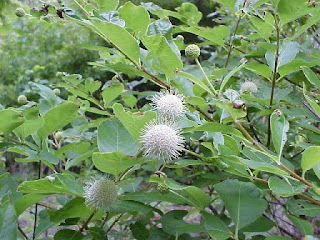I love Eupatorium coelestinum for
its showy bloom clusters in early fall. This plant is usually referred to by
one of its common names which include Hardy or Perennial Ageratum and Mistflower.
Eupatorium is a deciduous perennial
native American plant in the same family as Joe Pye Weed. The bright periwinkle
blue blooms of Eupatorium coelestinum attract a lot of attention in September and October, when most
flowers have stopped blooming. Mistflower contrasts nicely with fall-blooming
asters and the common fall mums.
The plentiful 4-inch flower clusters
atop tall stems resemble the shorter annual ageratum, but Hardy Ageratum comes back bigger and better every single year.
With large clumps of bright blooms
visible from a distance, Mistflower is a good candidate for a roadside garden.
Hardy Perennial Ageratum prefers full
sun, fertile soil, and regular water, but this hardy variety can tolerate
periods of drought. Like other varieties of Eupatorium, this one can grow in
wet soil too. We have a patch behind the greenhouse that has taken over a
shady spot where the sprinkler keeps the soil evenly moist to wet.
This very showy and
assertive perennial will reach heights of up to 4 feet tall, but it can be kept mowed to only a few inches. Just to give you a hint of its vigor, Mistflower
is in the mint family.
This is a perennial
plant that looks best in naturalistic informal gardens. It grows very well in
my shade garden, where its blooms seem electrified in September.
Perennial Ageratum emerges
late in spring, so be careful not to uproot it when doing your spring
weeding.
Cut back once or twice
in summer to promote bushiness and more blooms, and to keep it from coming into
full bloom too early. I always want mine to wait and bloom in October.


































